Abstract
Disease association with a genetic marker is often taken as a preliminary indication of linkage with disease susceptibility. However, population subdivision and admixture may lead to disease association even in the absence of linkage. In a previous paper, we described a test for linkage (and linkage disequilibrium) between a genetic marker and disease susceptibility; linkage is detected by this test only if association is also present. This transmission/disequilibrium test (TDT) is carried out with data on transmission of marker alleles from parents heterozygous for the marker to affected offspring. The TDT is a valid test for linkage and association, even when the association is caused by population subdivision and admixture. In the previous paper, we did not explicitly consider the effect of recent history on population structure. Here we extend the previous results by examining in detail the effects of subdivision and admixture, viewed as processes in population history. We describe two models for these processes. For both models, we analyze the properties of (a) the TDT as a test for linkage (and association) between marker and disease and (b) the conventional contingency statistic used with family data to test for population association. We show that the contingency test statistic does not have a chi 2 distribution if subdivision or admixture is present. In contrast, the TDT remains a valid chi 2 statistic for the linkage hypothesis, regardless of population history.
Full text
PDF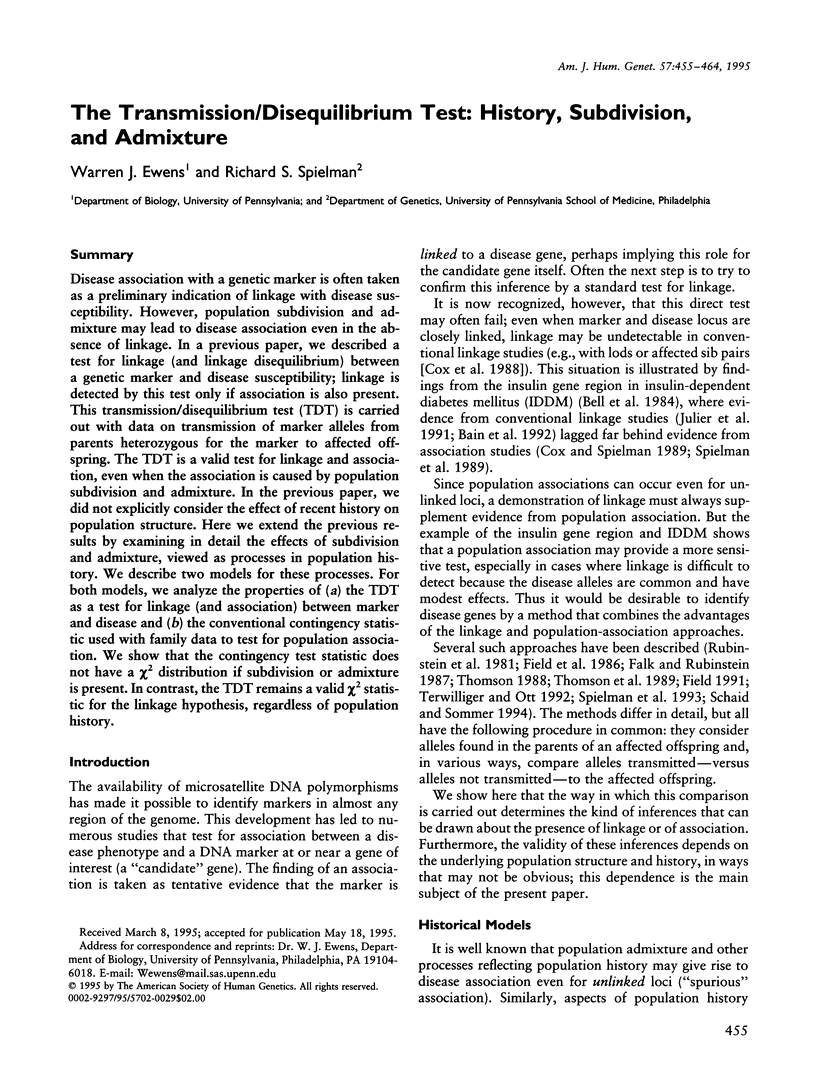
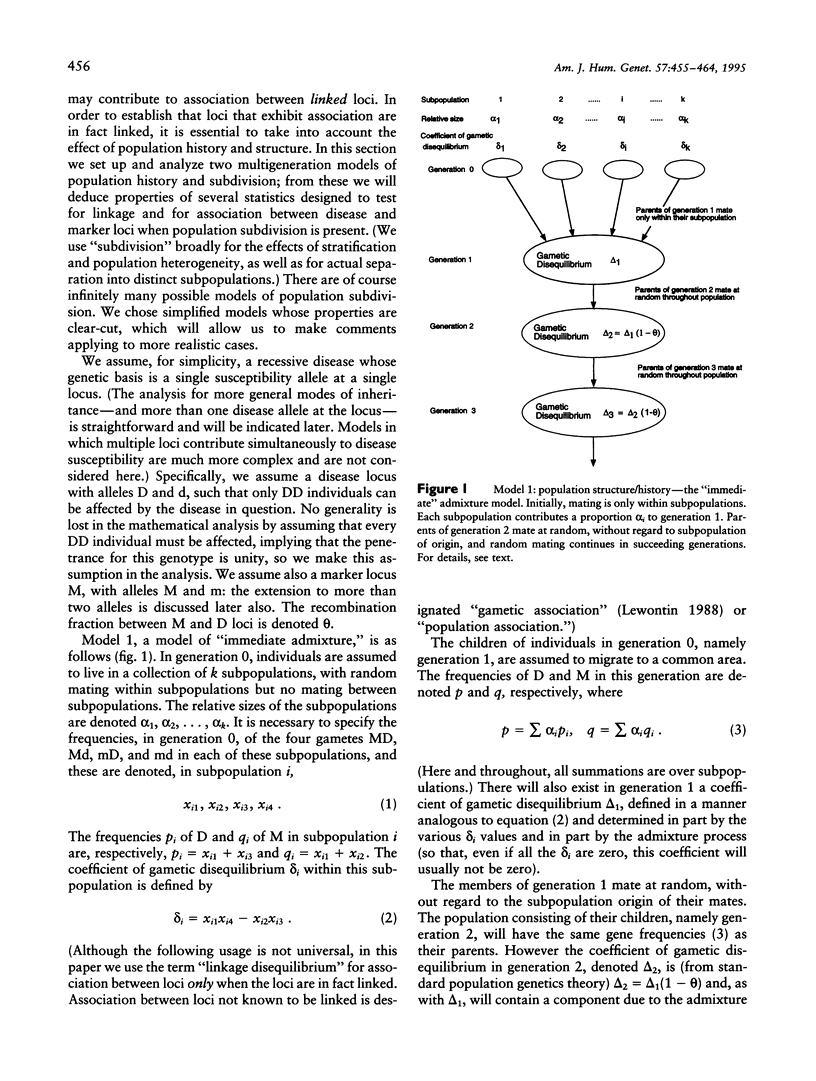
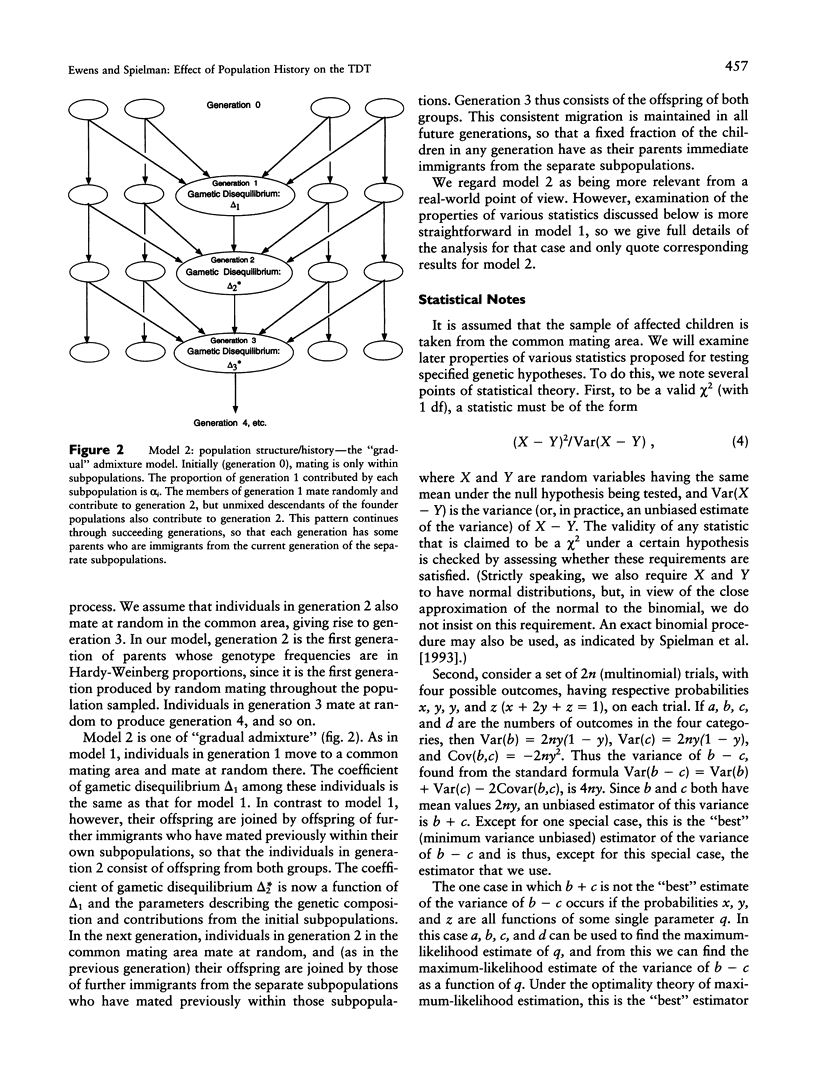
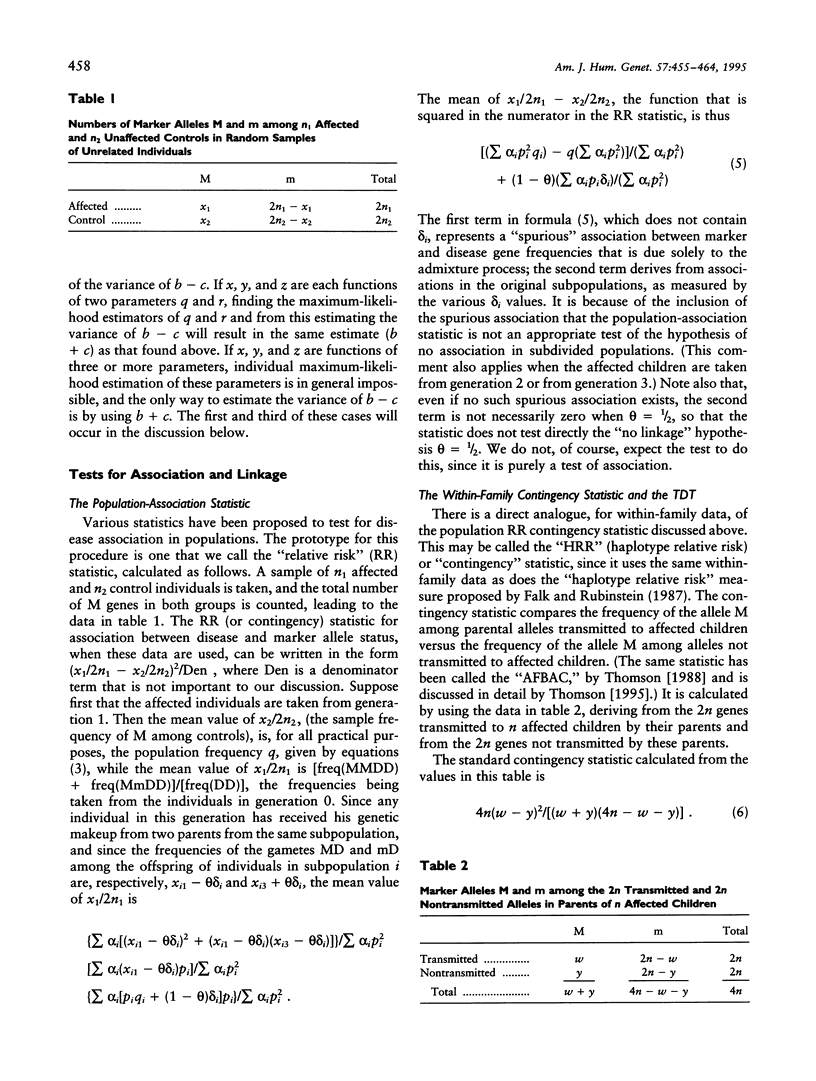
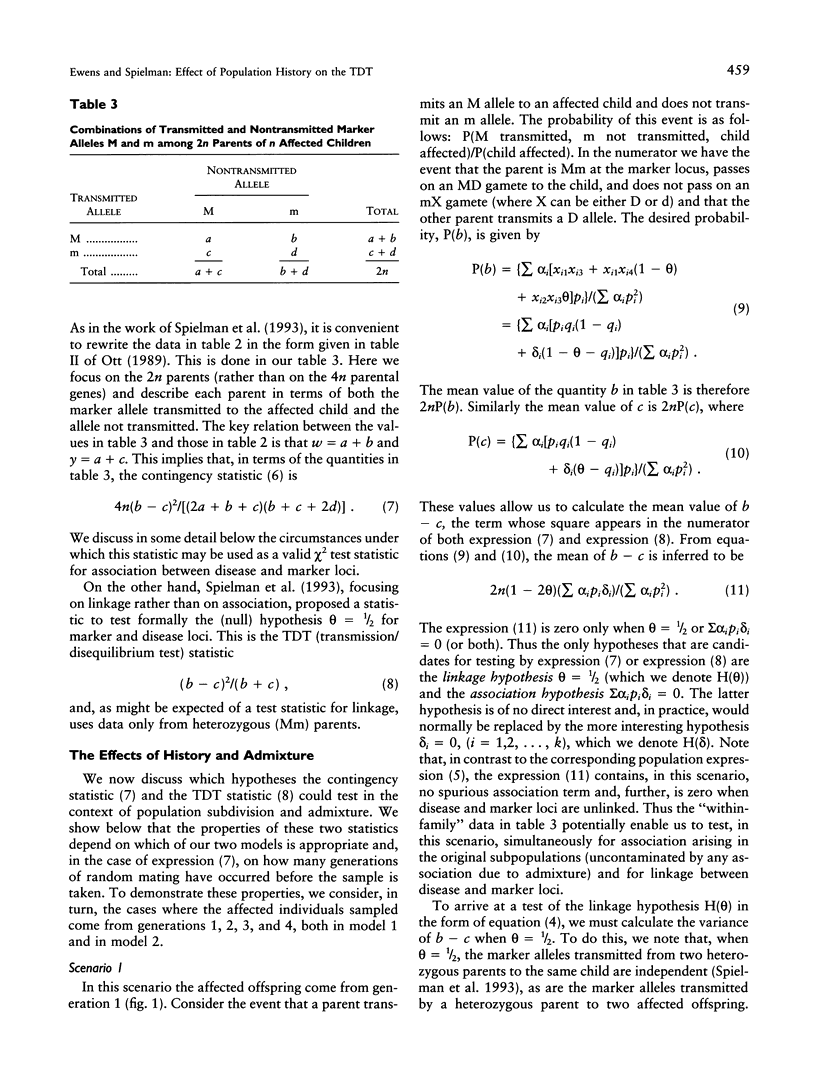
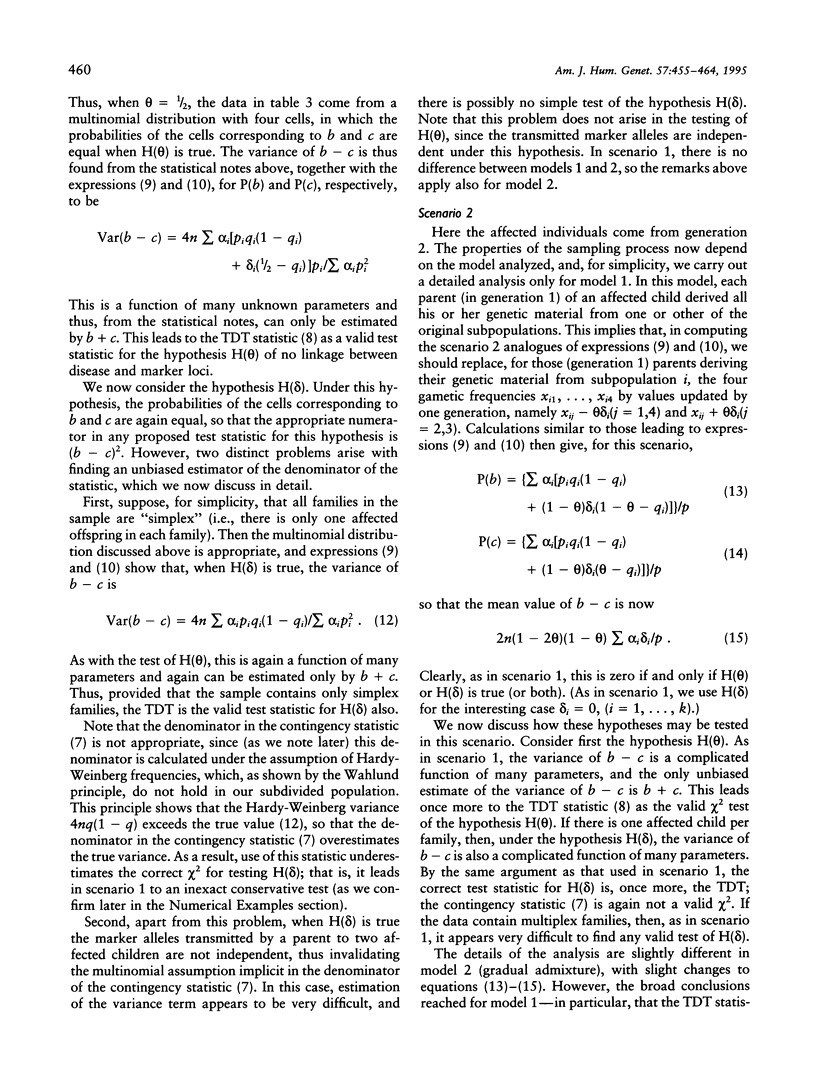
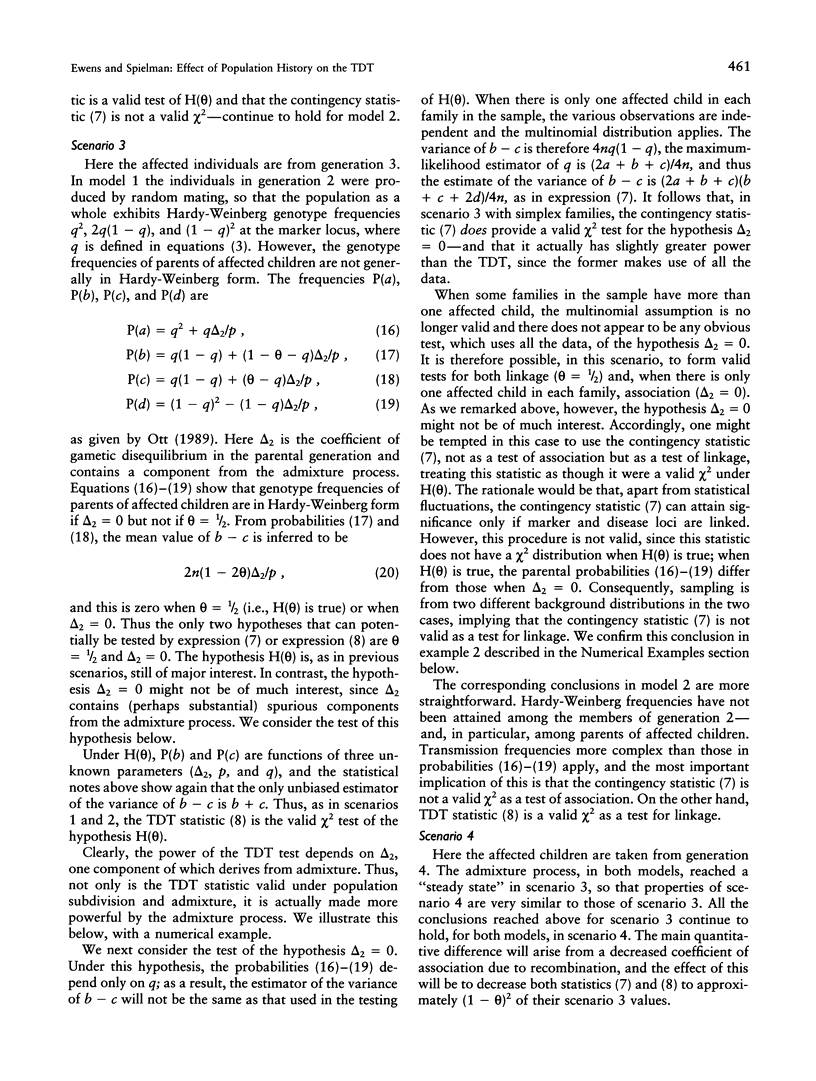

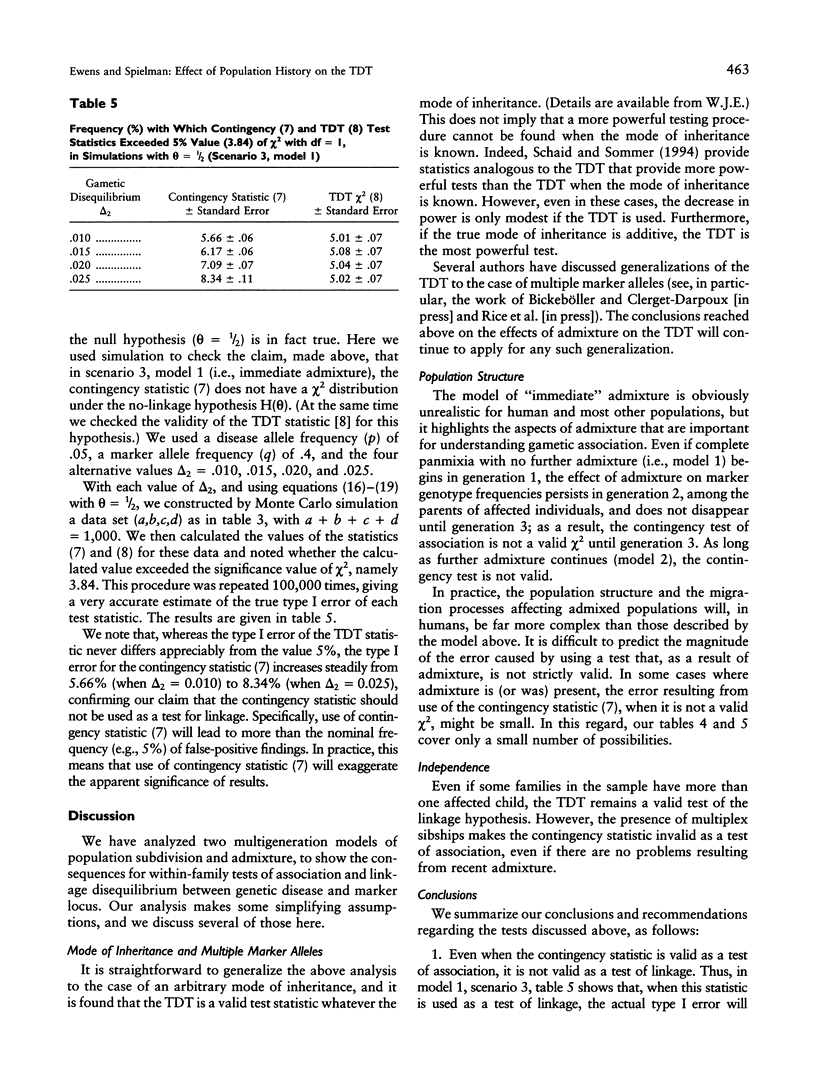
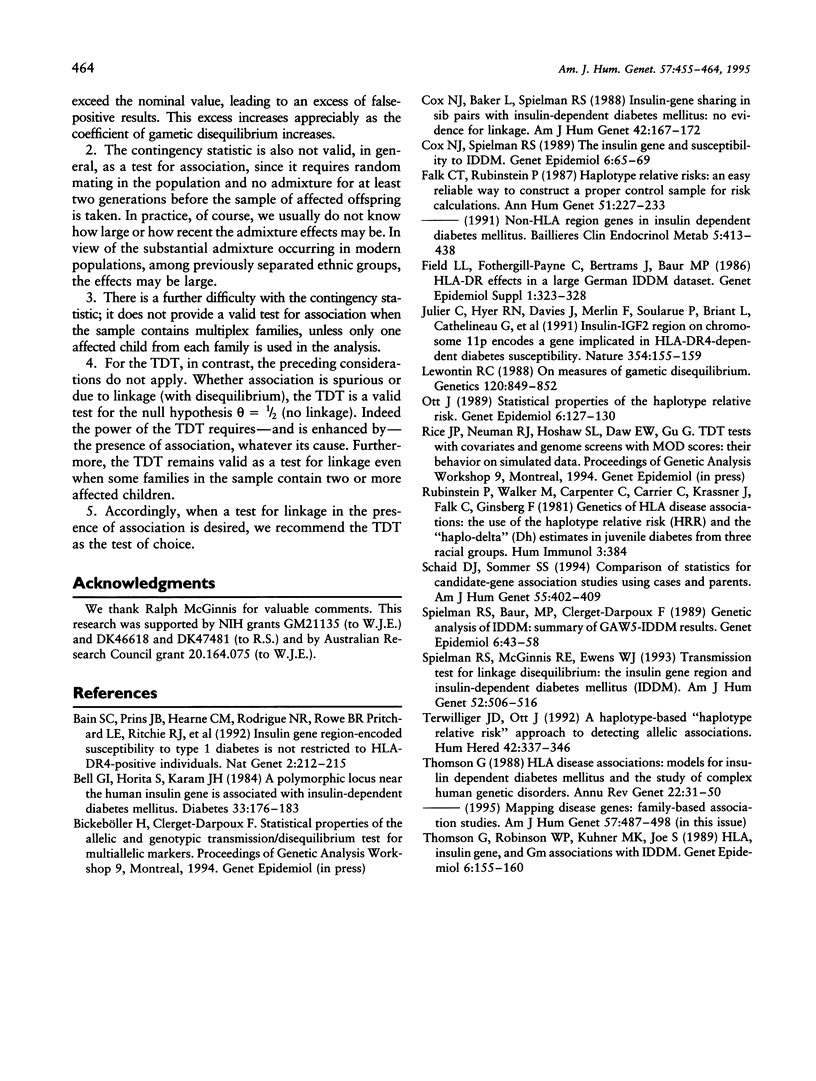
Selected References
These references are in PubMed. This may not be the complete list of references from this article.
- Bain S. C., Prins J. B., Hearne C. M., Rodrigues N. R., Rowe B. R., Pritchard L. E., Ritchie R. J., Hall J. R., Undlien D. E., Ronningen K. S. Insulin gene region-encoded susceptibility to type 1 diabetes is not restricted to HLA-DR4-positive individuals. Nat Genet. 1992 Nov;2(3):212–215. doi: 10.1038/ng1192-212. [DOI] [PubMed] [Google Scholar]
- Bell G. I., Horita S., Karam J. H. A polymorphic locus near the human insulin gene is associated with insulin-dependent diabetes mellitus. Diabetes. 1984 Feb;33(2):176–183. doi: 10.2337/diab.33.2.176. [DOI] [PubMed] [Google Scholar]
- Cox N. J., Baker L., Spielman R. S. Insulin-gene sharing in sib pairs with insulin-dependent diabetes mellitus: no evidence for linkage. Am J Hum Genet. 1988 Jan;42(1):167–172. [PMC free article] [PubMed] [Google Scholar]
- Cox N. J., Spielman R. S. The insulin gene and susceptibility to IDDM. Genet Epidemiol. 1989;6(1):65–69. doi: 10.1002/gepi.1370060113. [DOI] [PubMed] [Google Scholar]
- Falk C. T., Rubinstein P. Haplotype relative risks: an easy reliable way to construct a proper control sample for risk calculations. Ann Hum Genet. 1987 Jul;51(Pt 3):227–233. doi: 10.1111/j.1469-1809.1987.tb00875.x. [DOI] [PubMed] [Google Scholar]
- Field L. L., Fothergill-Payne C., Bertrams J., Baur M. P. HLA-DR effects in a large German IDDM dataset. Genet Epidemiol Suppl. 1986;1:323–328. doi: 10.1002/gepi.1370030749. [DOI] [PubMed] [Google Scholar]
- Julier C., Hyer R. N., Davies J., Merlin F., Soularue P., Briant L., Cathelineau G., Deschamps I., Rotter J. I., Froguel P. Insulin-IGF2 region on chromosome 11p encodes a gene implicated in HLA-DR4-dependent diabetes susceptibility. Nature. 1991 Nov 14;354(6349):155–159. doi: 10.1038/354155a0. [DOI] [PubMed] [Google Scholar]
- Lewontin R. C. On measures of gametic disequilibrium. Genetics. 1988 Nov;120(3):849–852. doi: 10.1093/genetics/120.3.849. [DOI] [PMC free article] [PubMed] [Google Scholar]
- Ott J. Statistical properties of the haplotype relative risk. Genet Epidemiol. 1989;6(1):127–130. doi: 10.1002/gepi.1370060124. [DOI] [PubMed] [Google Scholar]
- Schaid D. J., Sommer S. S. Comparison of statistics for candidate-gene association studies using cases and parents. Am J Hum Genet. 1994 Aug;55(2):402–409. [PMC free article] [PubMed] [Google Scholar]
- Spielman R. S., Baur M. P., Clerget-Darpoux F. Genetic analysis of IDDM: summary of GAW5 IDDM results. Genet Epidemiol. 1989;6(1):43–58. doi: 10.1002/gepi.1370060111. [DOI] [PubMed] [Google Scholar]
- Spielman R. S., McGinnis R. E., Ewens W. J. Transmission test for linkage disequilibrium: the insulin gene region and insulin-dependent diabetes mellitus (IDDM). Am J Hum Genet. 1993 Mar;52(3):506–516. [PMC free article] [PubMed] [Google Scholar]
- Terwilliger J. D., Ott J. A haplotype-based 'haplotype relative risk' approach to detecting allelic associations. Hum Hered. 1992;42(6):337–346. doi: 10.1159/000154096. [DOI] [PubMed] [Google Scholar]
- Thomson G. HLA disease associations: models for insulin dependent diabetes mellitus and the study of complex human genetic disorders. Annu Rev Genet. 1988;22:31–50. doi: 10.1146/annurev.ge.22.120188.000335. [DOI] [PubMed] [Google Scholar]
- Thomson G., Robinson W. P., Kuhner M. K., Joe S., Klitz W. HLA and insulin gene associations with IDDM. Genet Epidemiol. 1989;6(1):155–160. doi: 10.1002/gepi.1370060129. [DOI] [PubMed] [Google Scholar]


